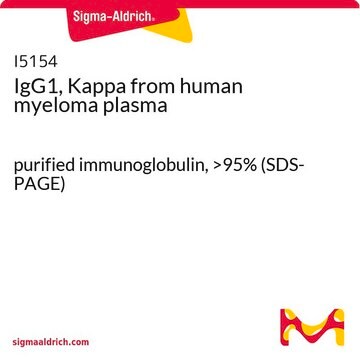50811-U
Ascentis® Express 90 Å C18 (2 μm) HPLC Columns
L × I.D. 5 cm × 2.1 mm UHPLC Column
Synonym(e):
Core-shell (SPP) Fused Core C18 HPLC column
About This Item
Empfohlene Produkte
product name
Ascentis® Express C18, 2 μm UHPLC Column, 2 μm particle size, L × I.D. 5 cm × 2.1 mm
Materialien
stainless steel column
Agentur
suitable for USP L1
Produktlinie
Ascentis®
Leistungsmerkmale
endcapped
Hersteller/Markenname
Ascentis®
Verpackung
1 ea of
Parameter
1000 bar max. pressure (14500 psi)
60 °C temp. range
Methode(n)
LC/MS: suitable
UHPLC-MS: suitable
UHPLC: suitable
L × ID
5 cm × 2.1 mm
Oberflächenbereich
120 m2/g
Verunreinigungen
<5 ppm metals
Matrix
Fused-Core particle platform
superficially porous particle
Aktive Matrixgruppe
C18 (octadecyl) phase
Partikelgröße
2 μm
Porengröße
90 Å pore size
Betriebs-pH-Wert
2-9
Anwendung(en)
food and beverages
Trenntechnik
reversed phase
Suchen Sie nach ähnlichen Produkten? Aufrufen Leitfaden zum Produktvergleich
Verwandte Kategorien
Rechtliche Hinweise
Ähnliches Produkt
Choose from one of the most recent versions:
Analysenzertifikate (COA)
Don't see the Right Version?
If you require a particular version, you can look up a specific certificate by the Lot or Batch number.
Besitzen Sie dieses Produkt bereits?
In der Dokumentenbibliothek finden Sie die Dokumentation zu den Produkten, die Sie kürzlich erworben haben.
Kunden haben sich ebenfalls angesehen
Verwandter Inhalt
Small molecules are ions and compounds of molecular weight typically less than 900 daltons. These compounds can be effectively separated and analyzed by HPLC, UHPLC and LC-MS using mainly silica particles or monolithic stationary phases with a broad range of column chemistries (modifications).
Niedermolekulare Verbindungen, sogannte Small Molecules, sind neutrale und ionische Verbindungen mit einem Molekulargewicht, das üblicherweise unterhalb von 900 Dalton liegt. Diese Verbindungen können durch HPLC, UHPLC und LC-MS vornehmlich unter Verwendung von Kieselgelpartikeln oder monolithischen stationären Phasen mit einem breiten Spektrum von „Säulenchemien“ (Modifikationen) effektiv getrennt und analysiert werden.
Unser Team von Wissenschaftlern verfügt über Erfahrung in allen Forschungsbereichen einschließlich Life Science, Materialwissenschaften, chemischer Synthese, Chromatographie, Analytik und vielen mehr..
Setzen Sie sich mit dem technischen Dienst in Verbindung.







